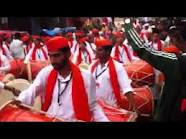Two train journeys from Aveiro
and we were at Aguda. Delfim , our professor had invited us for lunch and what
a beautiful lunch it was. His house right on the beach has a garden full of
beautiful roses, lovely ramblers which smell delicious, nothing of those artificial
insipid hybrids. These are the La France and Cardinal which grew in my
grandmother’s garden.
A good lunch, a nap would have
been just right but Prof. Delfim being an outdoors person decided a walk would
do us good; we were to visit the Ermida do Senhor da Pedra which is
commemorated in the Cantiga de São Simeão, a canto which dates back centuries
and speaks of a damsel waiting for her lover, waits and waits and ultimately is
drowned by the waves of the incoming tide…..
Sentada na ermida de São Simeão
Cercaram-me as ondas, que grandes são!
Eu atendendo o meu amigo!
Eu atendendo o meu amigo!
Não tenho barqueiro nem armador
Morrerei formosa no mar maior!
Eu atendendo o meu amigo!
Eu atendendo o meu amigo!
Morrerei formosa no mar maior!
Eu atendendo o meu amigo!
Eu atendendo o meu amigo!
This long trek was on the shore,
the sea rough, the wild wind blowing sand playfully, the sea crashes angrily on
the rocks, and the rocks shelter the visitors. Parents sleep whilst little
children play the age old game of building sand castles. The trek would have
been rough had there not been board walks that stretch for miles, that really
makes the trek easy and gave us plenty of time to admire the dune parks. That
was something new for me, all manner of weeds and tiny plants allowed to live
in peace, nobody tramples them. Somebody mentioned dune treks, lovely.
The small chapel, Ermida do
Senhor da Pedra, is built on rocks centuries ago and many say it was built on a Celtic site of worship. The Ermida is truly surrounded by a very angry
sea and the damsels lament can be heard as the sea rises higher and higher.
Inside the chapel has a well
decorated altar with a Christ crucified but why is the entire altar bathed in an
eerie green light? I am still wondering
On the way back we took a road
away from the shore, on the banks of a tiny rivulet, so clean, so fresh. Great
care has been taken to train the river into tiny waterfalls, weeds growing and
flowering plants completes the serene picture.
Courtesy. Claro Oliveira
Ermida do Senhor da Pedra; Courtesy Joao Paulo Coutinho
Capela do Sr. da Pedra courtesy Joaquim Oliveira










